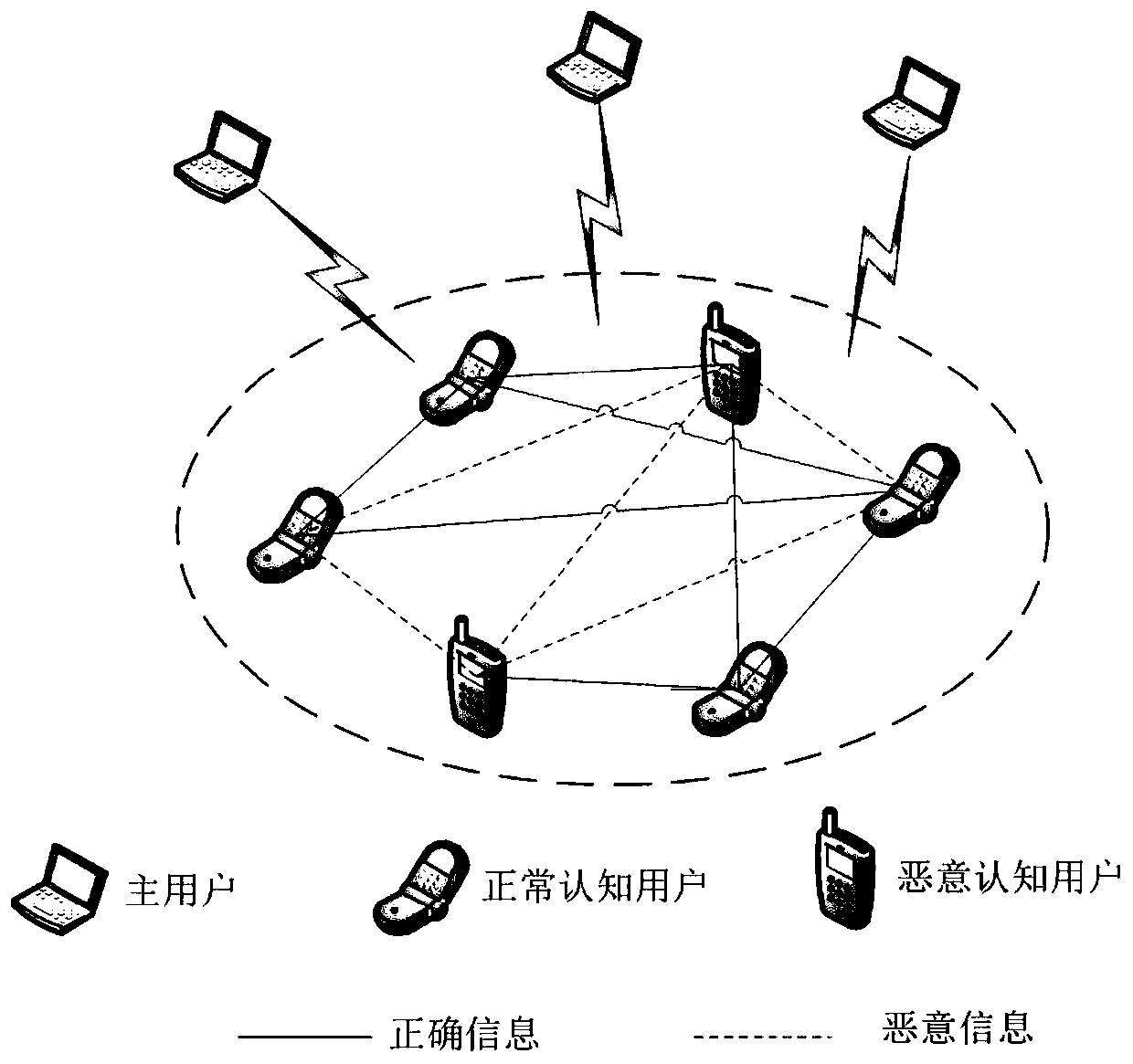Broadband weighted cooperative spectrum sensing algorithm for resisting intelligent SSDF attack
A collaborative spectrum sensing and broadband technology for cognitive radio applications
- Summary
- Abstract
- Description
- Claims
- Application Information
AI Technical Summary
Problems solved by technology
Method used
Image
Examples
Embodiment Construction
[0027] 1 system model
[0028] The present invention considers a broadband cooperative spectrum sensing scenario in a cognitive radio network, where J primary users PU and R secondary users SU (including normal cognitive users and MUs) are randomly distributed in the monitoring area of the network, as figure 1 shown.
[0029] Assuming that the total bandwidth of the network is W Hz, the frequency band is divided into Q non-overlapping sub-channels, and the bandwidth of each sub-channel is U=W / QHz. J primary users are authorized to occupy J sub-channels, and the remaining Q-J sub-channels The channel is in an idle state, so the natural sparsity of broadband spectrum usage allows SU to use spectrum holes to transmit data and improve the communication capability of the entire network.
[0030] 1.1 Wideband Spectrum Sensing Algorithm Based on Compressed Sensing
[0031] The traditional binary hypothesis testing model of wideband spectrum sensing is:
[0032]
[0033] Where...
PUM
 Login to View More
Login to View More Abstract
Description
Claims
Application Information
 Login to View More
Login to View More - R&D
- Intellectual Property
- Life Sciences
- Materials
- Tech Scout
- Unparalleled Data Quality
- Higher Quality Content
- 60% Fewer Hallucinations
Browse by: Latest US Patents, China's latest patents, Technical Efficacy Thesaurus, Application Domain, Technology Topic, Popular Technical Reports.
© 2025 PatSnap. All rights reserved.Legal|Privacy policy|Modern Slavery Act Transparency Statement|Sitemap|About US| Contact US: help@patsnap.com



